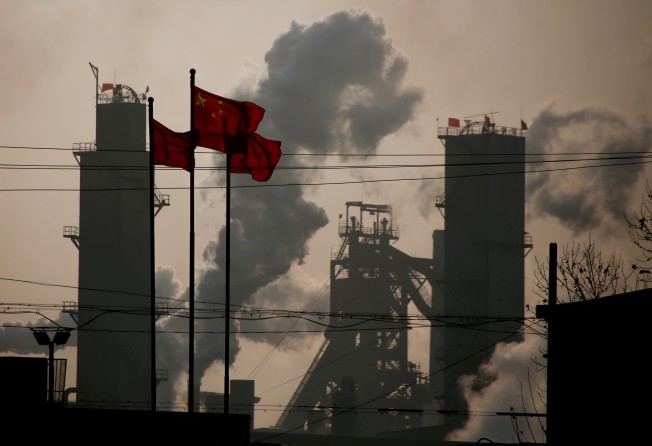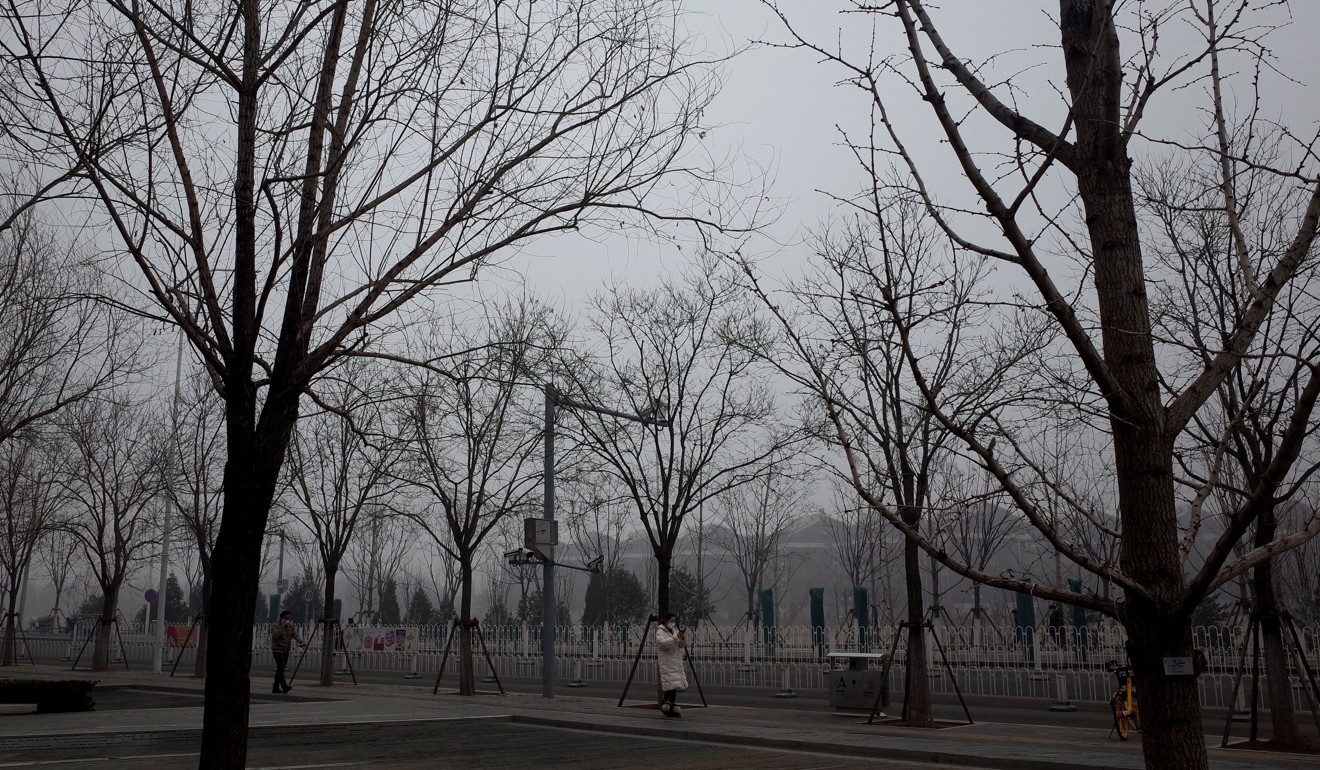Coronavirus: Study finds lockdown may have helped cut China’s carbon emissions
- Report by Centre for Research on Energy and Clean Air says data indicates China’s first decline in emissions in three years
- Drop is expected to be temporary, as Beijing has been eager to restart industrial activities

China, the world’s largest producer of greenhouse gases, may have seen its first decline in carbon emissions in three years as a result of the deadly coronavirus epidemic, which has shut down much of the country, a new study has found.
The study, released on Wednesday by the Centre for Research on Energy and Clean Air (CREA) in Finland, said that China’s carbon emissions have dropped by about 100 million metric tonnes over the past two weeks because of the extensive economic impact of the outbreak and the government’s lockdown measures – which have led to repeated delays in the resumption of industrial operations and a sharp reduction in energy demand.
China produces more than 25 per cent of the world’s total emissions of greenhouse gases, and despite a three-year decrease from 2014 to 2016, its carbon emissions have since rebounded, largely because of the country’s reliance on coal as an energy source.
CREA and other environmental groups have previously determined that China was predominantly responsible for the rise of global carbon emissions last year.
The researchers, though, cautioned that the emissions drop was expected to be temporary as Beijing has been keen to revive industrial activities.
“The Chinese government’s coming stimulus measures in response to the disruption could outweigh these shorter-term impacts on energy and emissions, as it did after the global financial crisis and the 2015 domestic economic downturn,” the report said. “The key factor determining the size of this impact is how fast things return to normal.”
The study compared emissions during a two-week period beginning 10 days after the start of the Lunar New Year in late January – in this case, February 3 – to the same period for each of the previous five years.
It found dramatic decreases across almost all industrial indicators, with daily power generation at coal power plants at a four-year low and steel production hitting a five-year low.
Coal and oil consumption were hit hard, with their combined reductions leading to a 25 per cent cut in carbon emissions. Coal production at Qinhuangdao, the country’s main coal port, fell to the lowest level in four years in the two weeks ending February 16, while refinery operating rates in Shandong province, the country’s main centre for oil refining, hit its low since 2015.
It also noted that China’s energy consumption was dominated by energy-intensive industries and freight, which helped explain the pall of suffocating smog in the capital and other northern cities during the holiday and in the past week or so.
Many commenters on social media have expressed anger and disbelief at the return of heavy smog – even as cars were off the roads and major cities were effectively locked down because of the outbreak.

Amid the public discontent, the Beijing Municipal Bureau of Environmental Protection released a statement last week, saying that the country’s steel blast furnaces had kept running through the extended holiday period with a slightly higher output than the same period last year.
Authorities in Beijing also pledged last week to step up efforts to curb smog by tightening controls on vehicle emissions and cutting emissions in petrochemical industry.
The CREA study followed another report by the group last week on the global impact of fossil fuels that painted a bleak picture of China’s persistent air pollution and its human and economic costs. That report, called “Toxic Air” – published jointly with the international environmental group Greenpeace – put a price tag on air pollution in China.
The survey estimated that smog and other pollution produced by the burning of fossil fuels causes roughly 1.8 million premature deaths in China every year, and costs the country’s economy an estimated US$900 billion annually.
While President Xi Jinping four years ago set a goal for China to reach its carbon emissions peak in 2030 – and reduce its carbon footprint in subsequent years – government officials have expressed caution over whether China can meet the goal as a result of uncertainties over its economy and the trade war with the US.
Purchase the China AI Report 2020 brought to you by SCMP Research and enjoy a 20% discount (original price US$400). This 60-page all new intelligence report gives you first-hand insights and analysis into the latest industry developments and intelligence about China AI. Get exclusive access to our webinars for continuous learning, and interact with China AI executives in live Q&A. Offer valid until 31 March 2020.